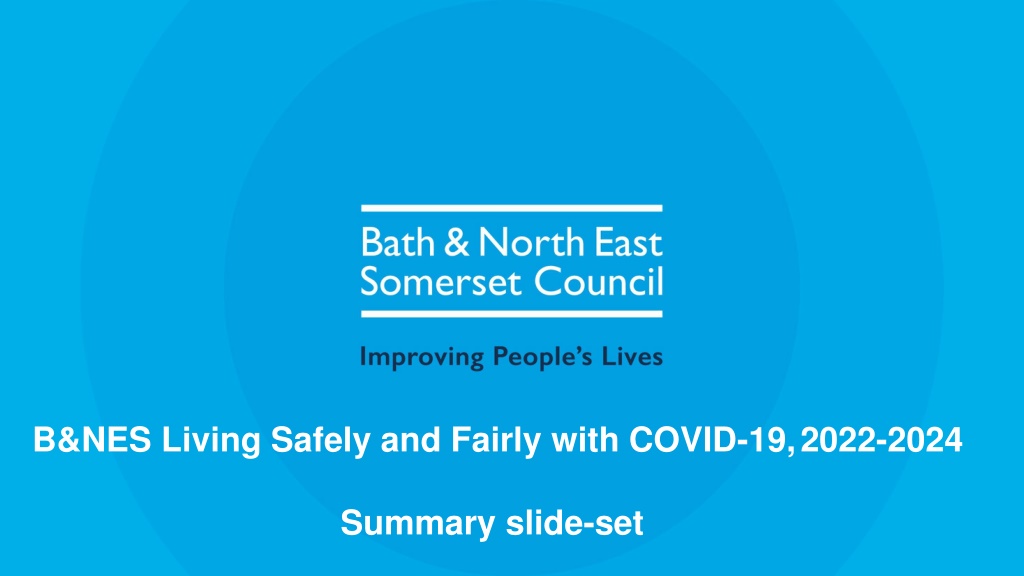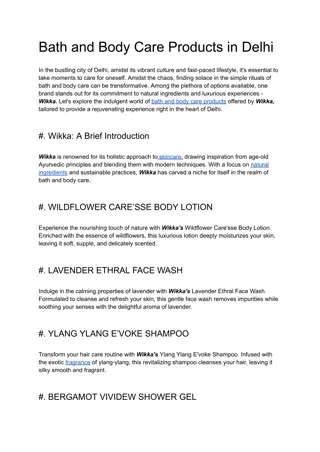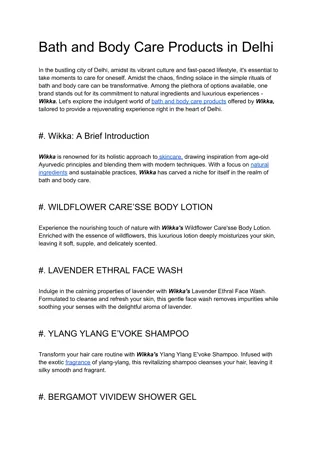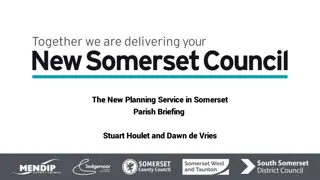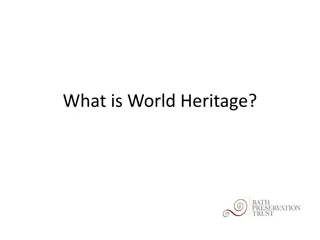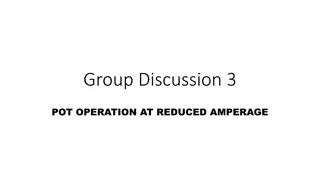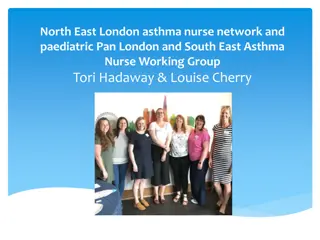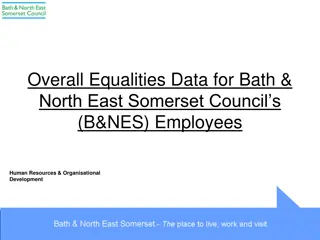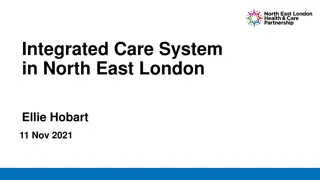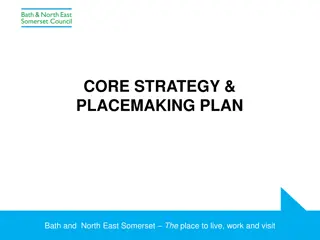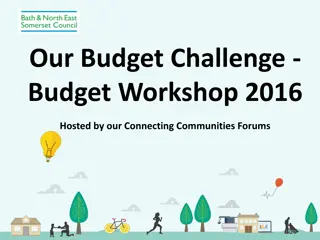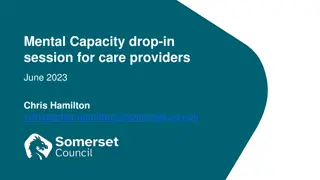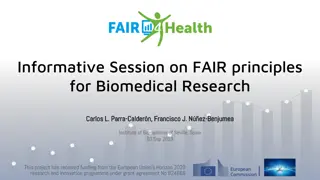Ensuring Safe and Fair Living with COVID-19 in Bath & North East Somerset
Embracing a holistic approach, the plan aims to facilitate safe living amidst COVID-19 in Bath & North East Somerset by prioritizing prevention, vaccination, community resilience, and addressing inequalities. With a focus on local capacity, the initiative seeks to proactively manage outbreaks, engage with communities, and enhance surveillance. Through effective communication and targeted actions, the strategy aims to enable a resilient response to new variants and potential resurgences, emphasizing behavioral precautions and vaccination outreach.
Download Presentation

Please find below an Image/Link to download the presentation.
The content on the website is provided AS IS for your information and personal use only. It may not be sold, licensed, or shared on other websites without obtaining consent from the author. Download presentation by click this link. If you encounter any issues during the download, it is possible that the publisher has removed the file from their server.
E N D
Presentation Transcript
B&NES Living Safely and Fairly with COVID-19,2022-2024 Summary slide-set
Plan on a page How we will live safely and fairly with COVID-19 in Bath & North East Somerset Prevent and protect Safer behaviours i.e. maintaining regular and good handwashing, Catch it, Bin it, Kill it , stay at home if unwell Covid-19 vaccination Community resilience; communities are supported to prepare for, respond to and recover from threats Addressing inequalities Respond: situation and outbreak management Support to higher- risk settings Testing and treatment Flexibility to respond to changing situation Vulnerable individuals Public spaces and events Vulnerable communities PEOPLE SETTINGS Care homes and adult social care settings PLACES Businesses Surveillance and monitoring Use of national, regional and system-wide data Local gathering of intelligence i.e. to support vaccination uptake Communications and engagement Local campaigns Listen to and work with communities Places of refuge i.e. hostels, refuges Education settings
What we aim to achieve AIM: To enable the residents of Bath and North East Somerset to live safely and fairly with COVID-19 Through the Council, partners, and communities working together And by retaining resilience and capabilities to respond to new variants, outbreaks and any resurgence of COVID-19. We aim to ensure: A joined-up approach to the prevention and control of COVID-19 infection. We seek to protect those individuals, communities and settings that remain more vulnerable to COVID-19. A focus on reducing inequalities as we recover from the pandemic, so that we ensure more equal outcomes for our whole population. Local resilience and capacity to flex up the response in the event of outbreaks and/or new variants that pose an additional threat to public health, or any national resurgence of COVID-19. Robust communications and engagement with communities and partners, informed by intelligence and behavioural insights approaches. Effective surveillance and monitoring to inform the early identification and proactive management of potential outbreaks, and to inform how we prioritise our resources i.e. the targeting of vaccination outreach clinics
Why we can live safely with COVID-19 We now understand more about COVID-19, how it behaves and how it can be treated. We have: - A comprehensive and effective vaccination programme in place - A range of drug and treatment approaches that the NHS can use to treat people who are most vulnerable to COVID-19. The pandemic has had a huge toll on wellbeing, social outcomes, and economic output, and these harms are now greater than the potential harms of COVID-19 to the population as a whole. We can move away from deploying regulations and restrictive requirements such as lockdowns in England, to using public health measures and guidance, with the key lines of defence being safer behaviours and vaccinations. To date, the data supports this approach as it continues to show that the link between COVID-19 cases, hospitalisations, and deaths has weakened significantly since the start of the pandemic.
Possible future COVID-19 scenarios 1. Stable and persistent: COVID-19 remains highly infectious with high levels of disease, but, due to measures such as vaccination, remains less severe or harmful in its effects. Flu-like seasonality: COVID-19 has periods of low and high prevalence as seen with flu. New large waves: we see resurgences of COVID-19 resulting from newly emerging variants, which vaccines are less effective against. Changing combinations of the above over time. 2. 3. 4. Best case scenario: low level disease, arrived at quickly, lasting immunity resulting in minimal seasonality, little to no risk around emergence of new variants. Worst case scenario: Persistent high levels of disease, waning immunity results in seasonality overlapping with existing seasonal winter pressures, with high risk of new epidemic waves (and potentially a new pandemic) resulting from new variants.
Learning from the past building upon strengths and opportunities The pandemic highlighted strengths in our ways of working that will be important to continue Strengths include: The Community Wellbeing Hub was set up to support residents with their basic needs, including providing emergency food parcels, collecting prescriptions, transporting residents to medical appointments, support with a gas or electricity top up, and support to people feeling anxious and/or lonely. Over time the Community Wellbeing Hub has expanded its offer to support people with a wide range of needs such as housing and benefits advice and health and wellbeing support such as help with stopping smoking, getting active or losing weight. Partnership working across organisations and sectors, and including to protect the most vulnerable Robustemergency planning structures and relationships Flexible and agile response demonstrated by all sectors Resilient workforce, and the crucial capacity and resilience provided by volunteers and volunteer networks Development of new ways of working (supported by IT systems, software and equipment)
Learning from the past building upon strengths and opportunities- continued Strengths include delivery of robust COVID-19 interventions such as: The COVID-19 asymptomatic mobile testing unit, set up in August 2021, travelled to over 50 locations across B&NES including, parks, supermarkets, voluntary and community sector organisations, and faith settings, providing information about lateral flow testing and access to kits. B&NES residents fed back that this was a very useful service and was a good way to help keep people safe . pop-up vaccination clinics to support the Bath Racecourse offer a local contact tracing service to supplement the work of NHS Test and Trace access to asymptomatic (LFD) and symptomatic (PCR) testing Pop-up vaccination clinics have been held at locations across the local authority, and including in community centres, sports facilities, and University settings. We have also taken vaccinations to where people live, where they face specific barriers in accessing healthcare, including to homeless hostel settings and boating communities. infection prevention and control advice on situations and outbreaks to care homes, schools and other settings
How we will seek to protect the public from COVID-19 related harms There are four key parts to the local response Prevent and protect Safer behaviours; for example, maintaining regular and good handwashing, Catch it, Bin it Kill it , stay at home if unwell Vaccination; first, second and booster Covid-19 vaccinations Community resilience; communities are supported to prepare for, respond to and recover from threats Addressing inequalities, including those that make people more vulnerable to severe disease from Covid-19, and inequalities that have widened as an impact of the pandemic Respond: outbreak management response Support to higher-risk settings such as Care Homes and homeless hostels Testing and treatment in line with national guidance Flexibility to respond to a changing situation, for example due to a resurgence of Covid-19 Communications and engagement Local communication campaigns Listen to and work with communities; to support good public health and infection prevention and control choices by communities Surveillance and monitoring Use of national, regional and system-wide data Local gathering of intelligence i.e. to support vaccination uptake
Addressing inequalities By mid-March 2021 the pandemic had led to 119,000 excess deaths in the UK and in 2020 caused a 9.9% drop in GDP. Behind these overall figures lie the unequal burdens carried by different population groups and regions. The pandemic has revealed stark differences in the health of the working age population those younger than 65 in the poorest 10% of areas in England were almost four times more likely to die from COVID-19 than those in wealthiest. The type and quality of people s work, housing conditions, and access to financial support to self-isolate all contributed to different exposures to the virus. Some groups, such as young people, those with disabilities, care home residents and minority ethnic groups have also been disproportionately affected by the pandemic. As part of its ongoing work to address inequalities the B&NES, Swindon and Wiltshire (BSW) Partnership has developed a new strategy to make sure that tackling inequalities is everybody s business and that there is a long-term commitment to addressing these issues across the system. Source: The Health Foundation (2021): Unequal pandemic, fairer recovery: https://www.health.org.uk/publications/reports/unequal-pandemic- fairer-recovery#:~:text=Despite%20these%20efforts%2C%20by%20mid,different%20population%20groups%20and%20regions
How we will ensure delivery of the Plan The following governance arrangements are in place to support effective and transparent decision- making B&NES Health and Wellbeing Board Information exchange with Council and partner forums Information exchange with external partners Report to i.e. Local Resilience Forum, Local Health Resilience Partnerships, regional UKHSA Health Protection Team, Department of Health and Social Care B&NES Health Protection Board with refreshed TOR and expanded membership Chair: Director of Public Health, B&NES Council Report to Sub-groups of the Health Protection Board with a specific focus i.e. vaccinations
